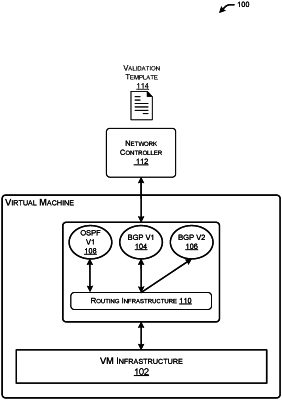| CPC G06F 9/44505 (2013.01) [G06F 8/65 (2013.01); H04L 45/02 (2013.01)] | 20 Claims |

|
1. A method comprising:
adding, to a network device that includes a first operating system (OS) component, a second OS component to run concurrently on the network device with the first OS component, the network device being part of a disaggregated network;
transmitting, from the first OS component and to the second OS component, data comprising network routing information;
storing the data in a memory of the second OS component;
registering the second OS component with a routing infrastructure of the network device to enable the second OS component to receive packets that are routed to the first OS component;
receiving a packet routed to the first OS component;
adding a timestamp and a first unique identifier (ID) to a first instance of the packet and transmitting the first instance of the packet to the first OS component;
adding the timestamp and a second unique ID to a second instance of the packet and transmitting the second instance of the packet to the second OS component;
transmitting first functionality data from the first OS component to a controller;
transmitting second functionality data from the second OS component to the controller; and
comparing the first functionality data with the second functionality data using a validation template to determine whether to replace the first OS component with the second OS component in the network device.
|